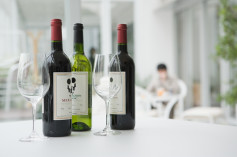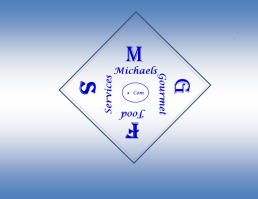
RESTAURANT OPERATIONS 101
CLASS DESCRIPTION
This class will consist of 6 - 1 hour blocks (or 3 – 2 hour blocks) covering Restaurant Management Operations, Back of the House Operations (BOH), the Front of the House Operations (FOH), Restaurant Financials, Planning the Business, and Planning the Business Divisions.
The Restaurant Management Operations consists of a complete overview of how to open and run a restaurant, hospitality or food service operation. It is a synopsis of the Master Program and covers all areas as an overview and detailed outline.
The Back of the House section (production) includes Kitchen Management Operations, Food Cost and Controls, Individual Station Outlines, Inventory Controls, Labor Cost and Controls, and also all Kitchen Control Forms in an Index. It is a complete template to use and train team members on the operational controls of running a profitable commercial kitchen.
The Front of the House section (sales and service) will cover Floor Operations and Controls with a complete Floor Service Outline, Bar Operations and Controls, Management Training for Alcoholic Beverages, the N.H. Policy Guideline and Model for Alcoholic Beverages, and Advanced Techniques in Sales and Service.
Restaurant Financials (template and training) elaborates in precise detail the financial structure and operational flow of all the aspects of both Financial Accounting (as required by the U.S. government), and Managerial Accounting that will create a profitable business. The sections are broken into Financial Training, Financial Accounting, and Managerial & Analytical Accounting. If the guidelines and training are followed, any viewer will have a full working knowledge of how a restaurant is run financially to make a profit.
Planning the Business consists of how to set up and run a restaurant business. It includes the complete discussion on writing a business plan, and includes a business plan template as well as a detailed marketing plan. It also includes a complete business filing procedure and an outline of what to do first, second and so on about how to set up the business; as well as complete sections on Introduction to the Client, Legal Criteria, Marketing Plan, Employee – Employer Relations (human resource) Training Strategies, and Food Service and Sanitation.
Planning the Business Divisions can be used to create separate profit centers within the original concept or can be used as a separate business concept and the template can be used to open and run their type of business. Each section of Catering, Home Meal Replacement and Fresh Gourmet Foods, Online, and Restaurant is set up to open and run each individual concept with full due process from the Master Template.
The class material will be brought by the Trainer in the form of a course manual or a USB drive, whichever is preferred, for each student covering all subjects. The course book manual charge is $20, USB Charge is $5 – USB requires student to have Microsoft Office 2003 or higher and PowerPoint. A page outline will be given on multiple suggested readings. A laptop is highly suggested but not necessary, a notebook and pen or pencil is all the student will need for class.
At the completion of the class the student will be awarded a Certificate of Achievement acknowledging the students participation and understanding of the material. The students name will then be entered into the company database and can be used as a reference for future employment objectives.
Hours 1 & 2 Back Of the House Training
Food Cost and Controls
Individual Station Outlines
Inventory Controls
Kitchen Management Operations
Labor Cost and Controls
Kitchen Control Forms Index
Hours 3 & 4 Front of the House Training
Bar Operations and Controls
Management Training for Alcoholic Beverages
N.H. Policy Guideline and Model for Alcoholic Beverages
Advanced Techniques in Sales and Service
Floor Operations and Controls
Floor Service Outline
Hours 5 & 6 Restaurant Management Training
The Business Plan
Business Structures
Employee – Employer Relationship
Legal Criteria
Training Strategies
Marketing Plans
Financial Training
Planning the Business Divisions
Michael’s Gourmet Food Services LLC ® Registered Copyright 2015
All Rights Reserved




